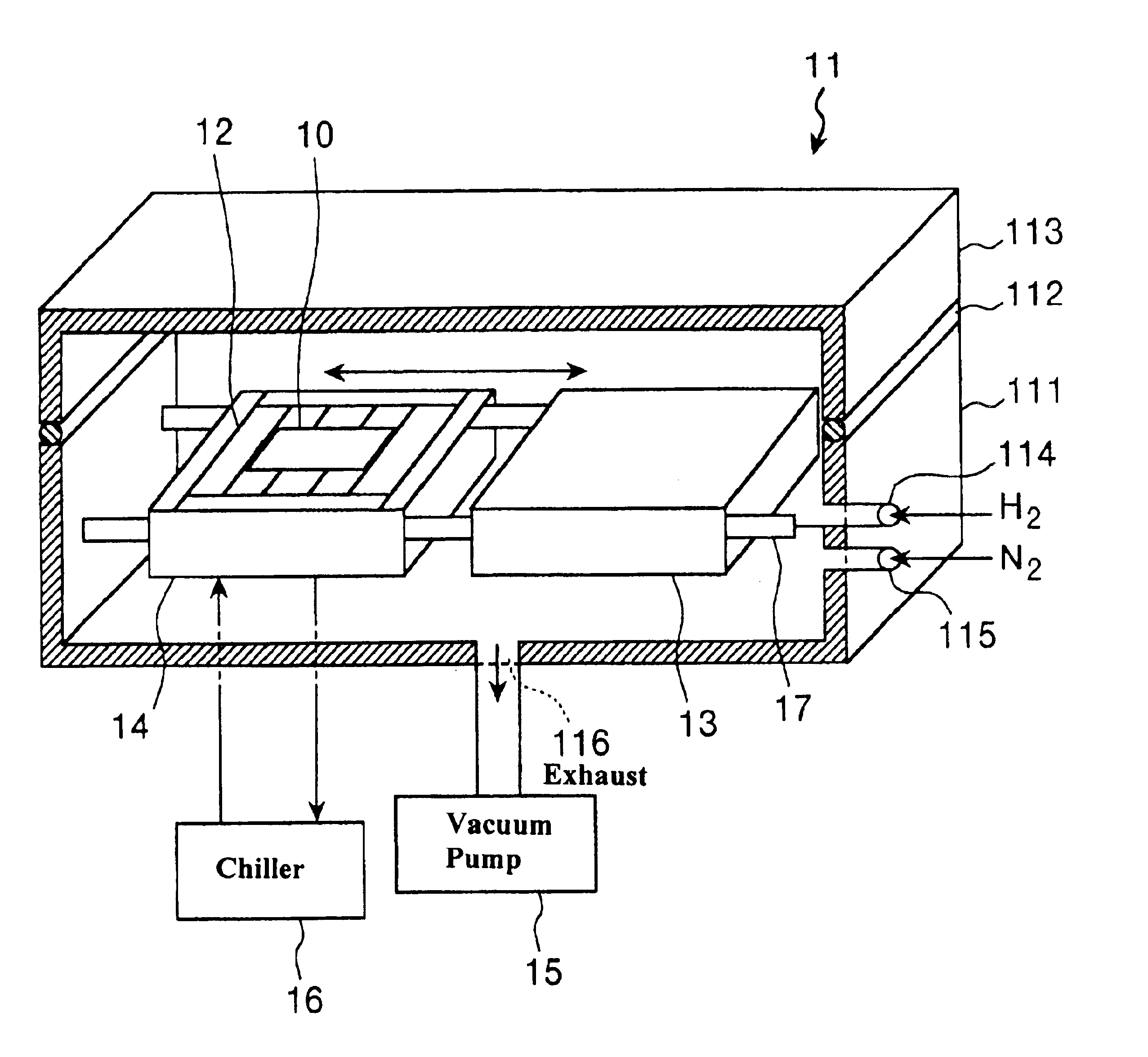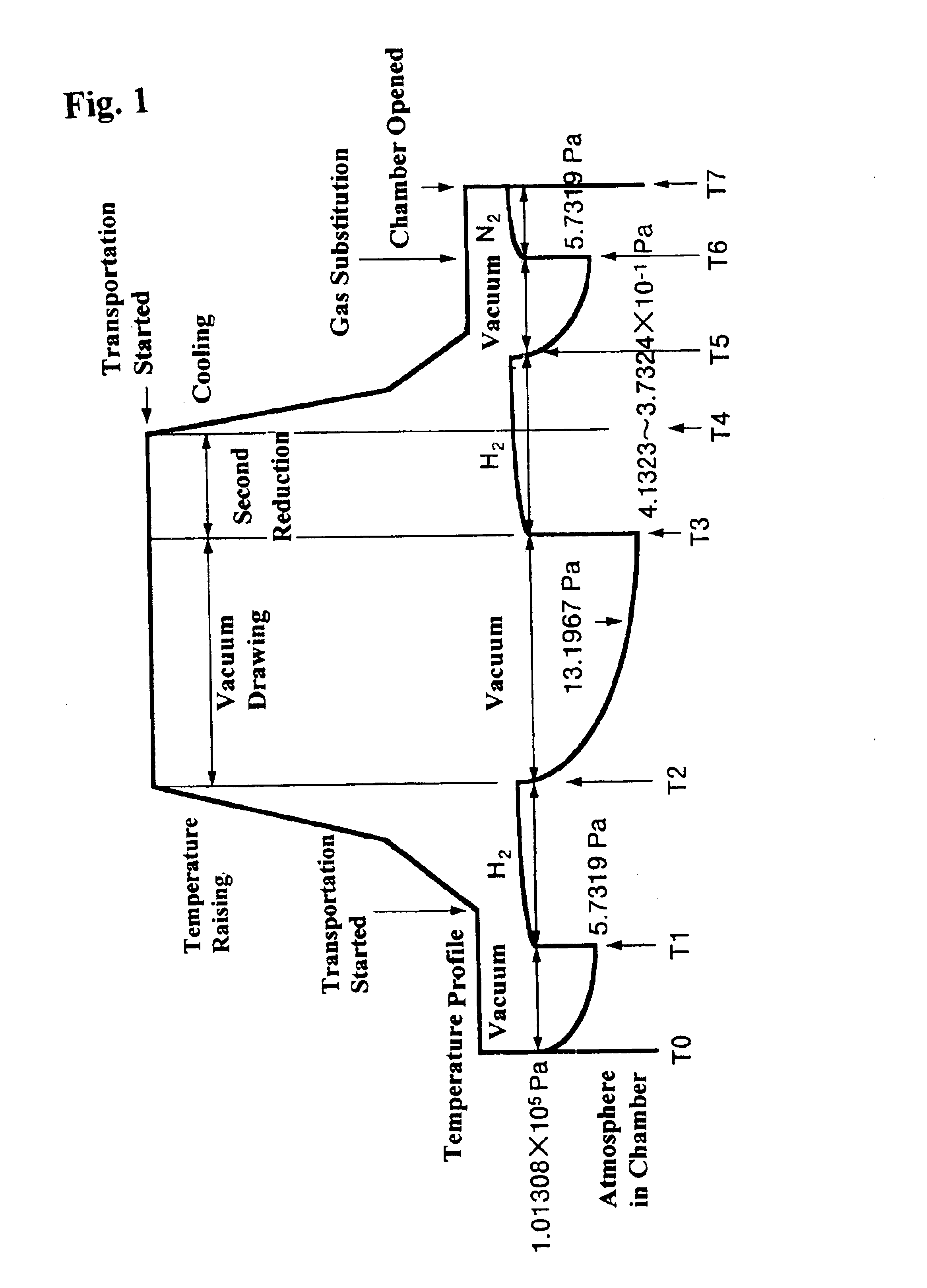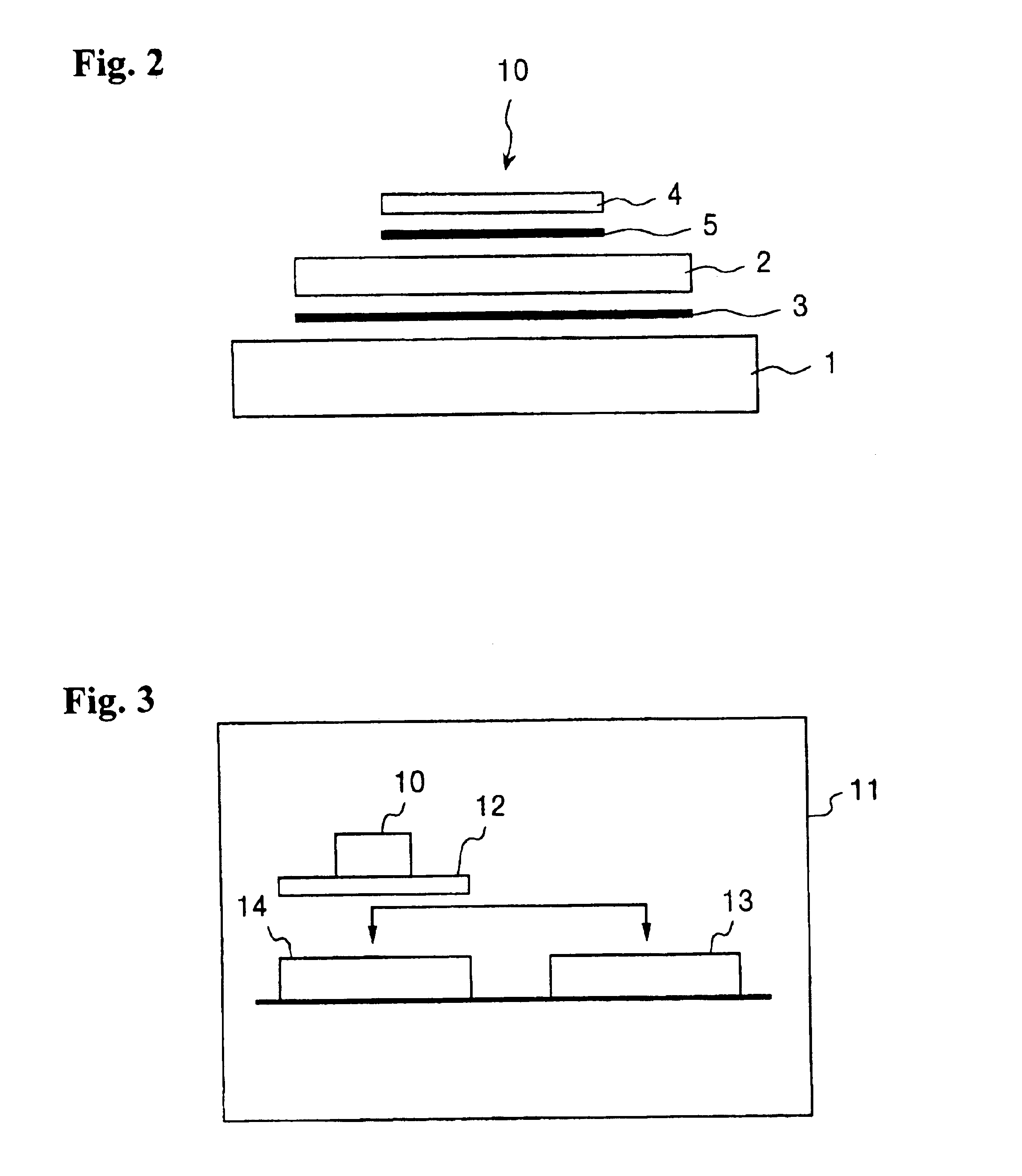Method of manufacturing semiconductor device
a manufacturing method and semiconductor technology, applied in the direction of manufacturing tools, soldering devices, printed circuit boards, etc., can solve the problems of voids, voids, and gasses generated by flux vaporization, and achieve the effect of removing warping and increasing creep
- Summary
- Abstract
- Description
- Claims
- Application Information
AI Technical Summary
Benefits of technology
Problems solved by technology
Method used
Image
Examples
Embodiment Construction
[0043]The present invention is explained in detail with reference to the drawings. FIG. 1 is a chart showing an example of a temperature profile, atmospheres, and pressures in a chamber and a processing operation in the method of manufacturing a semiconductor device according to the present invention. First, as shown in FIG. 2, the components to be soldered and bonded are prepared by stacking an insulator substrate 2 on a metal base 1 with a bonding solder sheet 3 sandwiched therebetween. On the insulator substrate 2, a silicon chip 4 is further stacked with another bonding solder sheet 5 sandwiched therebetween. Such a laminate or stack 10, as shown in FIG. 3, is positioned on a transport stage 12 of a reduced pressure furnace 11. The transport stage 12 is a configured to move back and forth between a hot plate 13 for heating the laminate 10 and a water cooling plate 14 for cooling the laminate 10.
[0044]When soldering is started according to the chart shown in FIG. 1, with the lami...
PUM
| Property | Measurement | Unit |
|---|---|---|
| temperature | aaaaa | aaaaa |
| total length | aaaaa | aaaaa |
| flow rate | aaaaa | aaaaa |
Abstract
Description
Claims
Application Information
 Login to view more
Login to view more - R&D Engineer
- R&D Manager
- IP Professional
- Industry Leading Data Capabilities
- Powerful AI technology
- Patent DNA Extraction
Browse by: Latest US Patents, China's latest patents, Technical Efficacy Thesaurus, Application Domain, Technology Topic.
© 2024 PatSnap. All rights reserved.Legal|Privacy policy|Modern Slavery Act Transparency Statement|Sitemap



